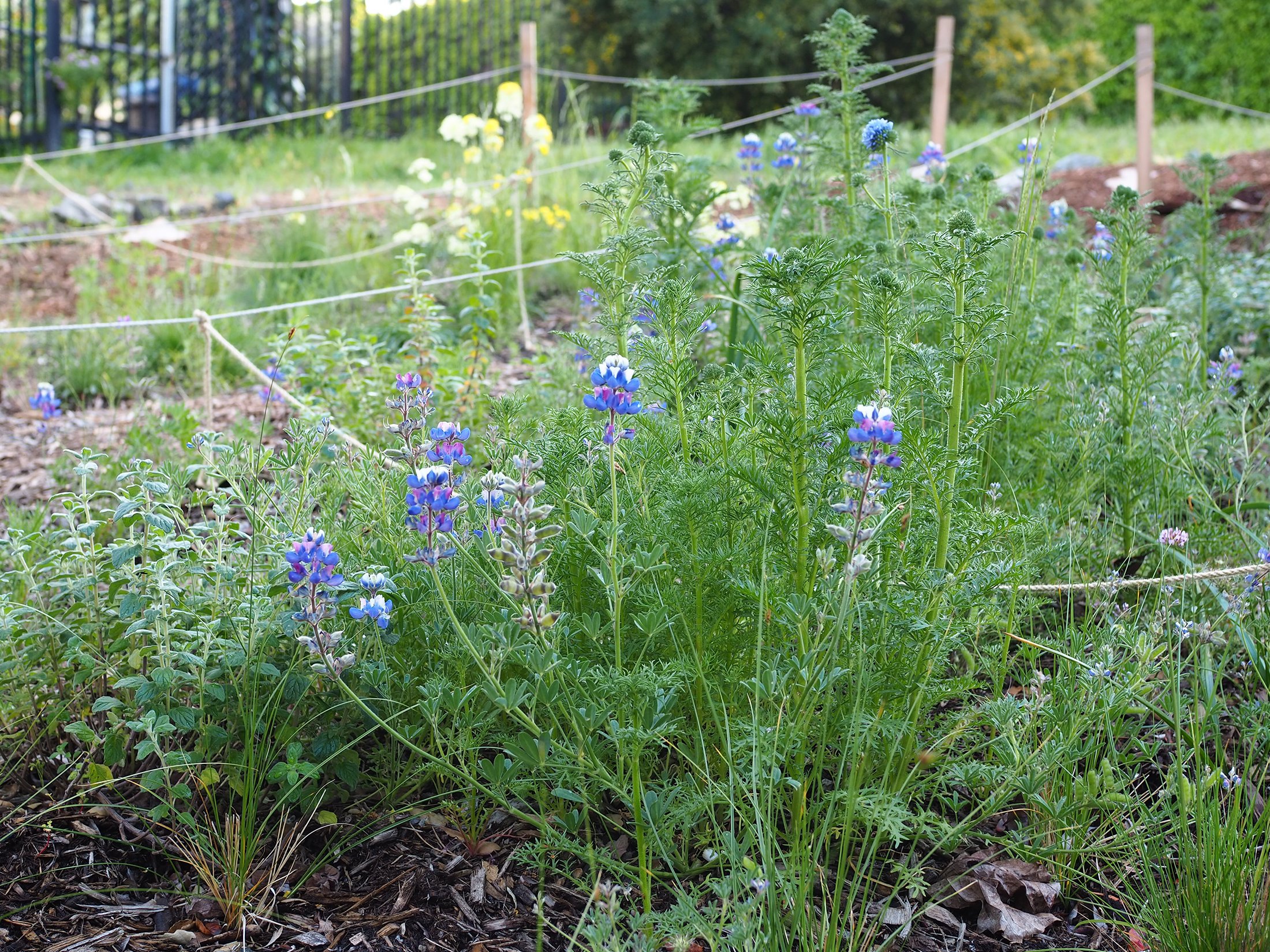
Contributor
- Topics: Archive
In his 1993 review of the first edition of Golden Gate Gardening, editor George Waters concluded: “if you garden in the San Francisco Bay Area, her book is essential and enjoyable reading.” A regional gardening guide was an uncommon thing in those days. Publishers wanted to assure the widest distribution to generate the greatest number of sales; regionalism went counter to that goal.
It’s a hopeful sign that an increasing number of books now acknowledge the regional nature of gardening, which has been a basic tenet of Pacific Horticulture for nearly thirty-five years. Good gardening begins with an understanding of the opportunities and constraints dictated by the climate and the soils.
A resident of San Francisco for more than three decades, Pam Peirce has been promoting the notion of regional gardening through her lectures and classes at San Francisco City College, her excellent columns in the San Francisco Chronicle, and occasional articles in Pacific Horticulture. Her evaluation of tomato cultivars that thrive in cool coastal gardens is worth the cover price alone, but this latest edition of her classic guide is about much more than selecting the right cultivars for the right garden. It’s simply an excellent gardening book, of particular value for those living where the ocean fogs influence the gardening climate, but with substantial new material for those living just beyond the fog’s reach.
Peirce begins with the basics of gardening: climate, soils, planning, planting, management, and experimentation; the last is always a worthy practice when gardening outside the “norm.” Watering the garden fills a chapter of its own, with suggestions on ways the gardener can be more efficient in the use of this precious and dwindling resource. She also explores the latest in pest-resistant plant selections and the best practices for controlling pests that do get out of hand, without resorting to actions that might damage the environment.
The ability to produce food from a home garden throughout the year is partly what sets apart this region of the West Coast. Peirce explores that notion with planting calendars, cultivation guidelines, harvesting tricks, and recipes to make the most of the harvest. She provides a source list for seeds and starter plants that is catered to the coastal gardener, along with an extensive guide to additional sources of information for the serious gardener.
And, while the emphasis is on fruits and vegetables that can be grown in the home garden, there is plenty of information for those wishing to complement the garden produce with flowers for cutting and eating and herbs for flavoring and fragrance.
Michael Pollan, author of The Botany of Desire and The Omnivore’s Dilemma and a Bay Area resident, echoes Waters’s words in his praise for Peirce’s masterpiece: “For vegetable gardening in the Bay Area, Golden Gate Gardening is indispensable—if you buy one gardening book, this is the one.” I could not agree more fully.
Richard G Turner Jr, editor
Share:
Social Media
Garden Futurist Podcast
Most Popular
Videos
Topics
Related Posts

January Showers Bring February flowers…
Fall 2022 It may not quite have the same ring to it as the old English proverb, but it has a lot more truth to

Healing Gardens
Spring 2022 Emily Murphy believes gardens hold the key to saving our health, our communities, and our planet. In her new book Grow Now Murphy

Your Keystone Plant Matrix with Garden Futurist Doug Tallamy
Spring 2022 Listen to the full Garden Futurist: Episode XIV podcast here. If you take Keystone plants out of your local food web, the food

A Botanical Force
Listening to Alice Doyle recount the origin stories of Log House Plants’ most popular introductions, educational campaigns, and innovative collections is a great way to









Responses